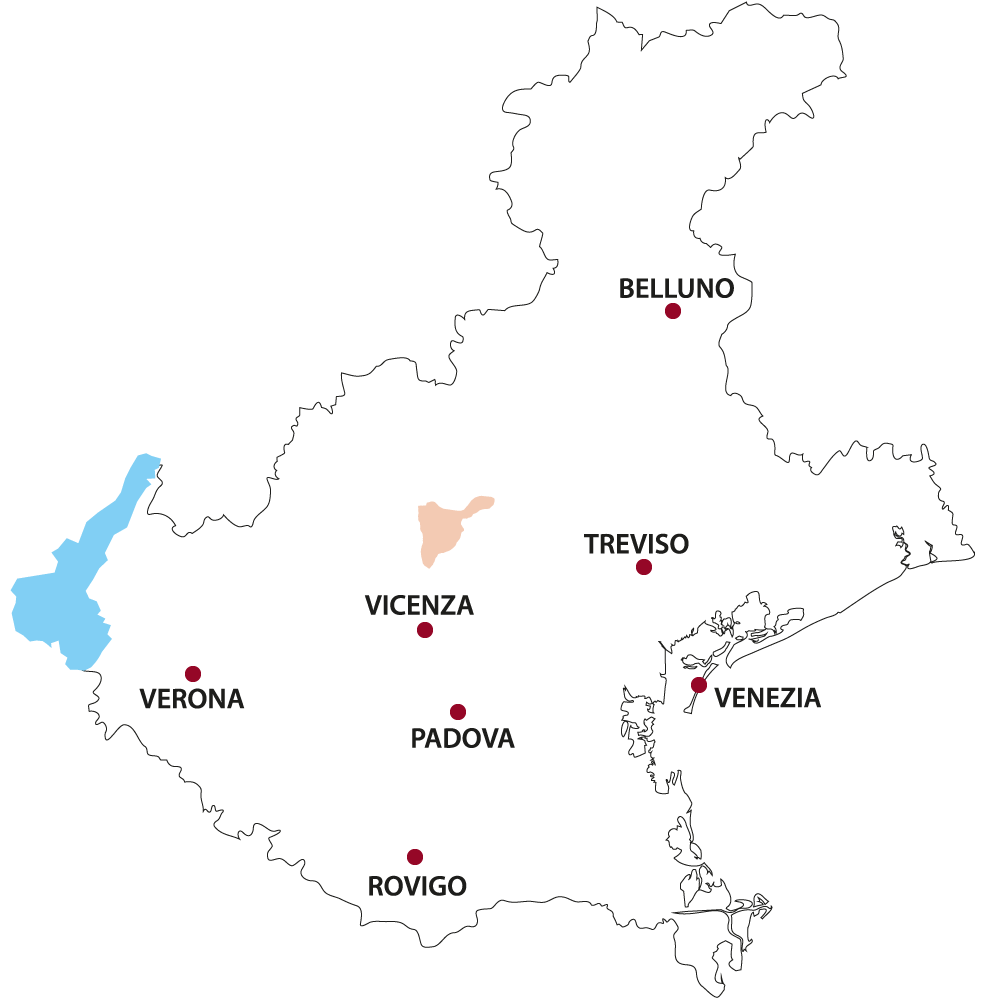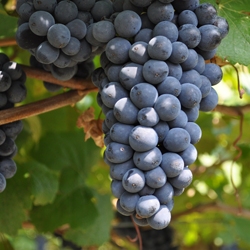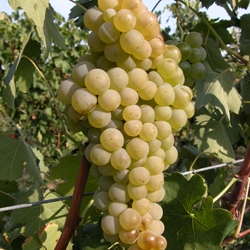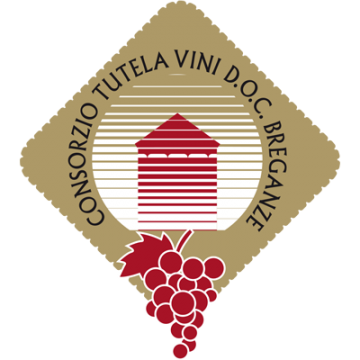

Zona di produzione
A plot of land bordering the foothills of the Vicenza area, 18 kilometres in length and five in width, the territory of the D.O.C. Breganze extends from the Astico valley to the banks of the Brenta River, and includes the territory of the Bassanese lying on the right of the river almost to the border of the province of Treviso. The city of Breganze, which gives this area its name, is almost the geographical centre, while the other cornerstones are Thiene to the west and Bassano del Grappa to the east. The Breganze is a D.O.C. which can be defined as small if compared to the entire production of the Veneto region, but one which has its roots in a millenary tradition acclaimed since 1300 as being located in particular lands that enhance the quality of vines, both autochthonous and of more recent acclimatisation. Environmental conditions are fundamental: the natural characteristics of the volcanic soil, and the mild dry climate, are able to enhance the intrinsic qualities of the vines grown in this area. The area of production includes the entire municipalities of Breganze, Fara Vicentino, and Molvena, and part of the municipalities of: Bassano del Grappa, Lugo di Vicenza, Marostica, Mason Vicentino, Montecchio Precalcino, Pianezze, Salcedo, Sandrigo, Sarcedo and Zugliano. At the time of the Republic of Venice, the great winemakers were the noble houses. In these places the aristocracy of the Veneto hinterland also had their villas with annexed cellars, often of a considerable size. Expertise and desire for innovation led Breganze to build, between the nineteenth and twentieth centuries, an ampelographic platform capable of preserving the peculiarities of the territory, adding to these the most important international French vines: alongside autochthonous grapes like the Vespaiola and Gruaja, therefore, came Tocai and subsequently Cabernet, Merlot and Pinot.
Caratteristiche e tipologie vino
The most well-known is the Torcolato, a raisin wine that bears the name of Breganze worldwide thanks to its unique and unrepeatable quality elsewhere. The best bunches of Vespaiola are carefully selected during the harvest then, twisted through a wire one above the other, they are hung to dry for some months in ventilated attics, prior to pressing. Torcolato has very low yields, from just 25 up to a maximum 30 litres per hundred kilos of grapes and, once left to ferment, it sees a slow transformation of sugars into alcohol, from two to three months, however this process is never completed because it stops when the wine is still sweet. Torcolato is ready for bottling after a maturation period of at least twelve months. The product, once mature, will have acquired a clear golden yellow colour, with a characteristic “sweet not sweet” taste so well balanced that it leaves the mouth dry and pleasantly satisfied, and with intense aromas of honey, ripe or dried fruit such as raisins, figs, and even dried apricot. Torcolato is a production with a great potential for aging: experience has shown that 20 years are absolutely not a problem for this great wine, to which the town of Breganze dedicates the third Sunday of January every year as “La Prima del Torcolato, la Spremitura Pubblica”, the public pressing of the Vespaiola raisin grapes; an event that has now achieved international notoriety. Always from the Vespaiola grape, the eponymous wine D.O.C. Vespaiolo is obtained, the ideal companion to the two sovereign dishes of the Vicenza culinary tradition: Bassano Asparagus and “Bacalà alla Vicentina” (salt cod). In addition to the Torcolato, the Consortium D.O.C. has been able to exploit the peculiarities of the autochthonous vines and confirm their vocation for red berry grapes, Cabernet and Merlot in particular, with the possibility of producing them in purity, but also with the “cut Bordeaux” that has been so successful among large growers. Merlot and Cabernet are the two basic varieties of this wine whose intense ruby red colour with garnet reflections is an indication of its aging in wood. The olfactory senses pick up toasted and spiced hints derived from the process of maturation and aging; the smoothness and hardness of tannins resulting from this period of maturation that the wine has had, in barriques or in steel barrels, do not escape in the mouth. The Breganze Red can be produced with a minimum of 50% Merlot and up to 50% of another red berried non-aromatic variety, jointly and severally present in the same vineyard and in the same enterprise. It is possible to label as Reserve all red wines and Torcolato that have undergone at least two years of aging starting from the 1st November of the production year. The Breganze White has at least 50% Tai grapes, and the other 50% grapes of a non-aromatic white berry variety jointly and severally present in the same enterprise. Another wine produced in purity is the Tai (formerly known as Tocai).
Grapes
-

PINOT NERO
-

VESPAIOLA
The Vespaiola grape is exclusively from the area of Breganze D.O.C. It seems that the name derives from the predilection of wasps for the richness of the sugars in its grapes, especially when they are ready for harvest, and they are stormed by insects. It ripens late and is usually harvested in the second half of September. The wine obtained is of a golden yellow colour with a pleasant taste which is acidic to the palate and fairly full-bodied. From this grape Vespaiolo is produced, now also available in a Spumante version and, with the withering of the grapes, the Torcolato. There are other native varieties that deserve to be remembered such as the Marzemino, Gruajo, Groppello and Pedevenda. Among the international vines it is worth mentioning the Pinot Nero, which here boasts a cultivated acreage among the most extensive in Italy, and the Cabernet, the pride and flagship of the producers who know how to enhance its characteristics both in pure form and in the Breganze Rosso, where it is combined together with Merlot.
White Wines
BREGANZE D.O.C. BIANCO
Colour: more or less intense straw-like yellow
Bouquet: vinous, delicately intense
Taste: rounded, fresh, bodied;
Alcoholic Strength minimum total volume: 11,00%
Accompaniments: soups, fish, white meats
BREGANZE D.O.C. TAI
Colour: more or less intense straw-like yellow
Bouquet: vinous, delicately intense
Taste: well-balanced and velvety
Alcoholic Strength minimum total volume: 11,00%
Accompaniments: starters, soft cheeses,soups.
BREGANZE D.O.C. PINOT BIANCO
Colour: light white straw-yellow
Bouquet: light white straw-yellow
Taste: well-balanced and velvety
Alcoholic Strength minimum total volume: 11,00%
Accompaniments: fish based starters, soups, risotto, crustaceans.
BREGANZE D.O.C. PINOT GRIGIO
Colour: from straw-like yellow to golden yellow, sometimes with coppery reflections
Bouquet: light white straw-yellow
Taste: well-balanced and velvety
Alcoholic Strength minimum total volume: 11,00%
Accompaniments: light fish or white meat based second courses.
BREGANZE D.O.C. VESPAIOLO
Colour: from straw-like yellow to golden yellow, quite intense;
Bouquet: also in the Spumante version intense fruity flavour, characteristic
Taste: full, fresh
Alcoholic Strength minimum total volume: 11,00%
Accompaniments: all fish based first courses, it is at its best when matched to the traditional dishes of Vicenza, such as Asiago cheese, salt cod and asparagus from Bassano
BREGANZE D.O.C. VESPAIOLO SPUMANTE
Colour: shiny straw-like yellow with a persistent foam;
Bouquet: intense fruity aroma, characteristic
Taste: full, rounded, fresh, characteristic
Alcoholic Strength minimum total volume: 11,00%
Accompaniments: starters, fish based dishes, salt cod, and asparagus from Bassano
BREGANZE D.O.C. CHARDONNAY
Colour: more or less intense straw-like yellow
Bouquet: intense, correclty aromatic
Taste: pleasantly mellow, velvety, well balanced
Alcoholic Strength minimum total volume: 11,00%
Accompaniments: River fish
BREGANZE D.O.C. SAUVIGNON
Colour: straw-like yellow
Bouquet: delicate, more or less aromatic
Taste: well-balanced and pleasant
Alcoholic Strength minimum total volume: 11,00%
Accompaniments: starters, white meats, asparagus, herb risotto.
BREGANZE D.O.C. TORCOLATO
Colour: from golden yellow to intense amber yellow;
Bouquet: intense aroma, characteristic of honey and raisin;
Taste: from medium sweet to sweet, well-balanced, velvety, decisive;
Alcoholic Strength minimum total volume: 14% vol.;
Accompaniments: a wine for contemplation, really nice on its own but excellent at the end of a meal with dry pastries, at its best with foie gras pâté and blue cheeses.
Red Wines
BREGANZE D.O.C. ROSSO
Colour: lively ruby red, also intense and tending to garnet with aging;
Bouquet: vinous, characteristic, sometimes herbaceous with an intense and persistent aroma
Taste: well-balanced, full-bodied, dry, robust and correctly tannic
Alcoholic Strength minimum total volume: 11,00%
Accompaniments: red meats, roasts, cold meats
BREGANZE D.O.C. CABERNET
Colour: dark ruby red with garnet reflections
Bouquet: very intense, pleasant, characteristic
Taste: dry, robust, correctly tannic
Alcoholic Strength minimum total volume: 11,00%
Accompaniments: red meats, roasts and game
BREGANZE D.O.C. CABERNET SAUVIGNON
Colour: intense ruby red, tending to brick red with aging;
Bouquet: vinous, characteristic, more or less herbaceous with an intense and persistent aroma
Taste: vinous, characteristic, more or less herbaceous;
Alcoholic Strength minimum total volume: 11,00%
Accompaniments: red and white meat based dishes, especially with skewers and barbeques
BREGANZE D.O.C. PINOT NERO
Colour: ruby red with brick red shades
Bouquet: delicate
Taste: dry, pungent with bitterish aftertaste
Alcoholic Strength minimum total volume: 11,00%
Accompaniments: roasts, ovine and pork meats, slightly spicy cheeses.
BREGANZE D.O.C. MARZEMINO
Colour: more or less lively ruby red;
Bouquet: very intense, pleasant, characteristic
Taste: vinous, intense and pleasant;
Alcoholic Strength minimum total volume: 11,00%
Accompaniments: Second courses with strong flavour such as barbeques and roasts.
BREGANZE D.O.C. MERLOT
Colour: more or less intense lively ruby red
Bouquet: vinous, characteristic, more intense if aged, herbaceous, with notes of green capsicum and berries;
Taste: well-balanced, full-bodied, dry, robust, correctly tannic
Alcoholic Strength minimum total volume: 11,00%
Accompaniments: cold meats, white and red meats, stewed meats, meat roasts

